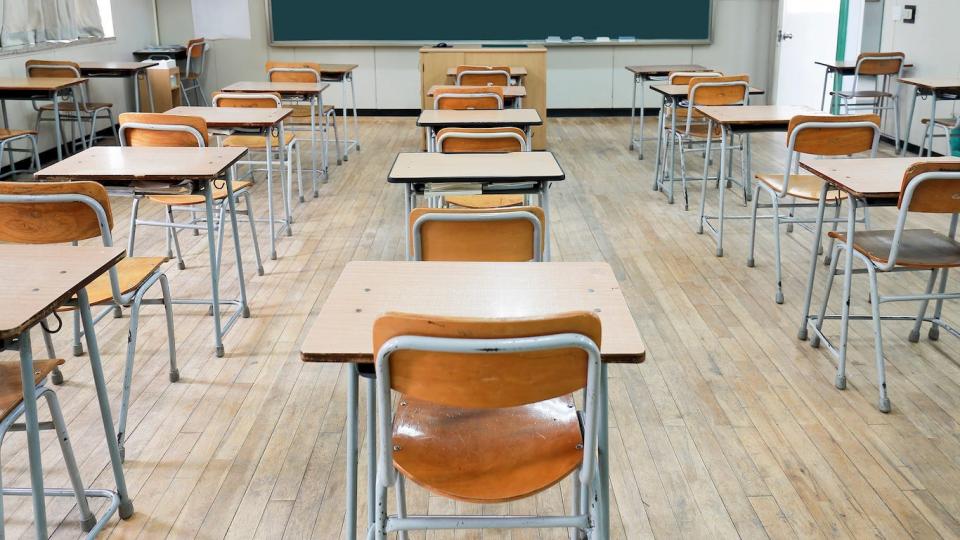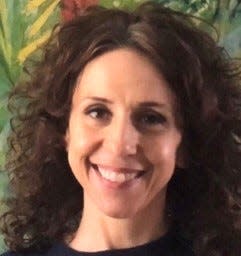America's schools: Teachers like me don't feel safe enough to return to the classroom yet
A public safety-minded police chief and truth-telling scientist frantically warn of a deadly, unseen menace. A bungling, economically concerned mayor ignores the threat and encourages people to enjoy the summer.
With paralleling themes of mortal danger versus hubris, and reason versus demagoguery, it’s clear why some have compared the 1975 film classic "Jaws" with the coronavirus experience. But in the debate over reopening schools, there’s an updated plot twist: Despite mounting dead bodies and unmitigated peril, the mayor has not only demanded that shark-infested beaches open, but has demanded, in all caps, that the town’s children and lifeguards immediately start swimming.
In the film, knowing the mayor’s reckless, shortsighted rejection of reality will have lethal consequences is dramatic irony. In real life, it is tragedy. Welcome to Summer 2020.
Don't push teachers into the deep end
Abandoned by any semblance of national leadership during a raging pandemic, students, teachers and staff are being told to jump into the deep end and return to school buildings. They will be risking their lives and their families’ lives, and endangering their communities to do so. All the precious time and resources spent to implement hybrid models and social distancing protocols will be washed away with the building's first positive COVID-19 case. Then it will be a hard pivot back home, using the same scattershot remote learning practices developed in an emergency.
Epidemiologist: Schools need to reopen now. Here's how to do it safely.
That is why the smartest, most practical strategy is marshaling energy and dollars into developing as robust and equitable a remote learning plan as possible. This is far from ideal. We know remote teaching is not even remotely teaching. But it will save lives, offer the most consistent education for our children this fall — and provide a solid foundation on which to build a stronger hybrid model, later in the year.
Those arguing that children must return to buildings for a quality education need to know — this is almost impossible:
►Classrooms will only be as safe as a local jurisdiction’s resources and political ideologies allow. With Centers for Disease Control and Prevention guidelines labeled as “very tough” by President Donald Trump and “flexible” by the Education Secretary Betsy DeVos, the federal government is clearly more concerned with plausible deniability than safety measures.
►As districts scramble to paste together opening procedures, no thorough academic planning is taking place — and even if it was, there is no feasible implementation. In a hybrid model, a teacher runs multiple sections of classes while simultaneously managing an online classroom; two full-time enterprises, neither with fully developed pedagogy, and both dividing the attention of districts, teachers and students.

The best move right now for our children is having one concentrated place to learn — online — with educators who had time to troubleshoot, refine and uplevel practices. After all, the only experts in remote learning are those of us who actually just went through it.
Start supporting our schools
Teachers know all too well that our students are potentially locked up at home in abusive or other dire situations, unprotected. We have special needs students whose hard-earned gains are lapsing due to not receiving required services. We understand how, for many families, schools function as de facto child care. These are sickening atrocities and hardships — yet they don't supersede the loss of life. Schools are the front line to address these traumatic and cruel realities, but this is a Band-Aid for broken societal infrastructures.
For far too long, we have relied on underfunded, overburdened public schools to compensate for not properly funding or legislatively protecting comprehensive social services. Before you ask students and teachers to risk their lives, take a hard look at your past and future voting choices. Do your candidates’ records and values align with alleviating the concerns you are relying on schools to address when lives are on the line?
New York City official: Learn from our ordeal. Slow the COVID monster while you still can.
Parents, politicians and pundits have plenty of data to prove students fare better educationally, psychologically and emotionally being in a classroom. I agree, based on nine years as a Bronx high school educator and seven as a clinical therapist in at-risk New York City communities.
Even so, we cannot conflate a global health crisis with a horrendous — but temporary — educational or psychological one. This is a pandemic. Sacrifices must be made. Are you more comfortable sacrificing learning needs or humans? What is the number of sick people that you, personally, are willing to accept? How many deaths?

In a matter of months, this virus has altered every facet of life as we knew it. Painful adjustments are necessary, and until we have better control of this crisis, the most imperative one is to temporarily pause on returning to classrooms.
Having lived through the hellscape that was New York City this spring, my perspective is biased. Yes, there are areas of our country that have evaded the wrath of COVID-19. But this virus does not heed geography, and at the moment there is no sign of it abating.
We cannot know when it will be safe for a full return. The most practical path to sustainable education lies in developing thoughtful, substantial and all-inclusive distance learning practices to use now that will undergird a more flexible in-school model later. It is not a perfect solution, but it will keep people alive.
As for your kids, we will get them back on track. Let us first focus on making remote learning the best and safest education possible.
Christine Vaccaro is a New York City high school educator, dual certified in English Language Arts and Special Education. She blogs for the Badass Teachers Association.
You can read diverse opinions from our Board of Contributors and other writers on the Opinion front page, on Twitter @usatodayopinion and in our daily Opinion newsletter. To respond to a column, submit a comment to letters@usatoday.com.
This article originally appeared on USA TODAY: COVID-19 and schools: Don't return to classroom learning this fall

